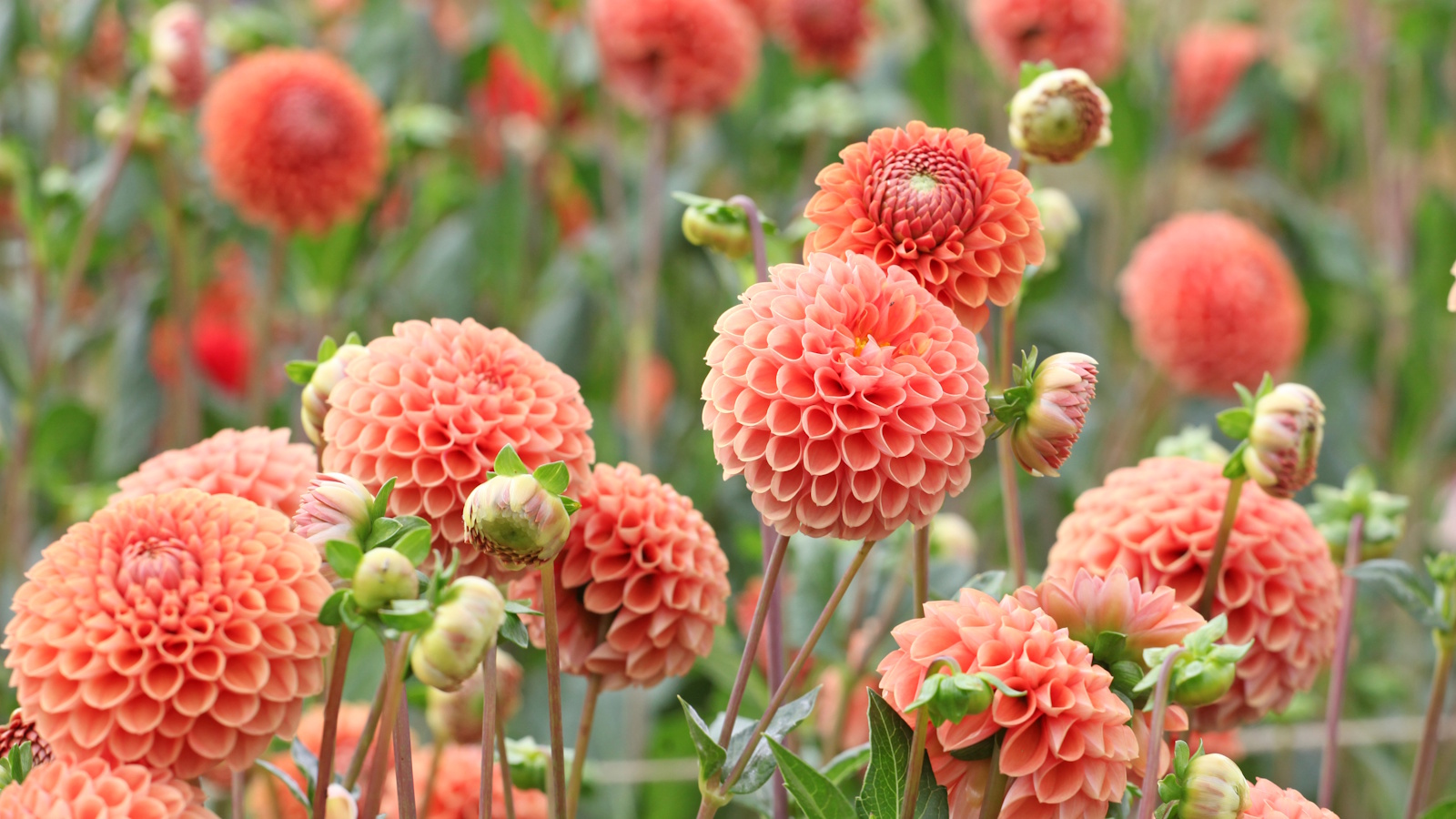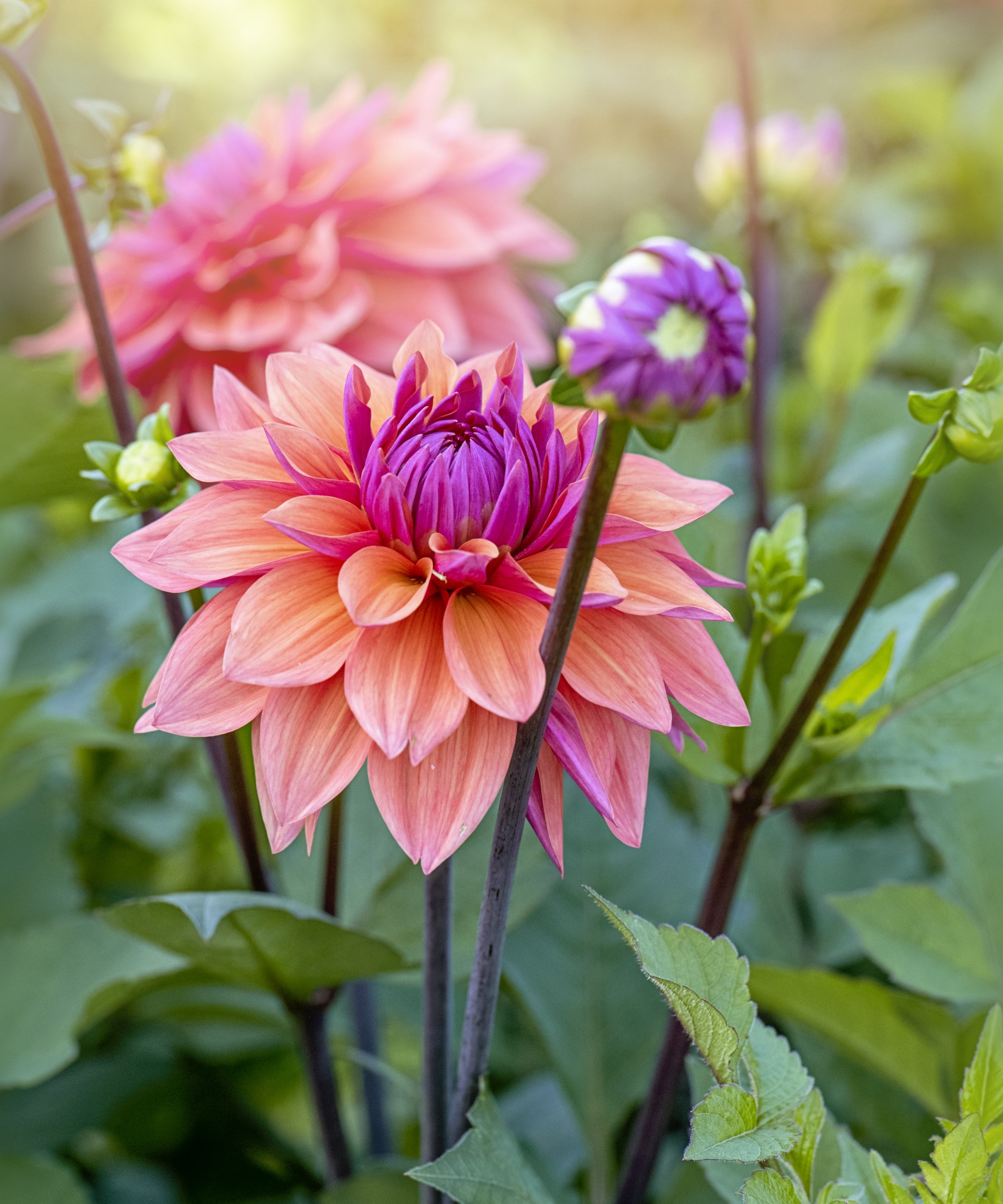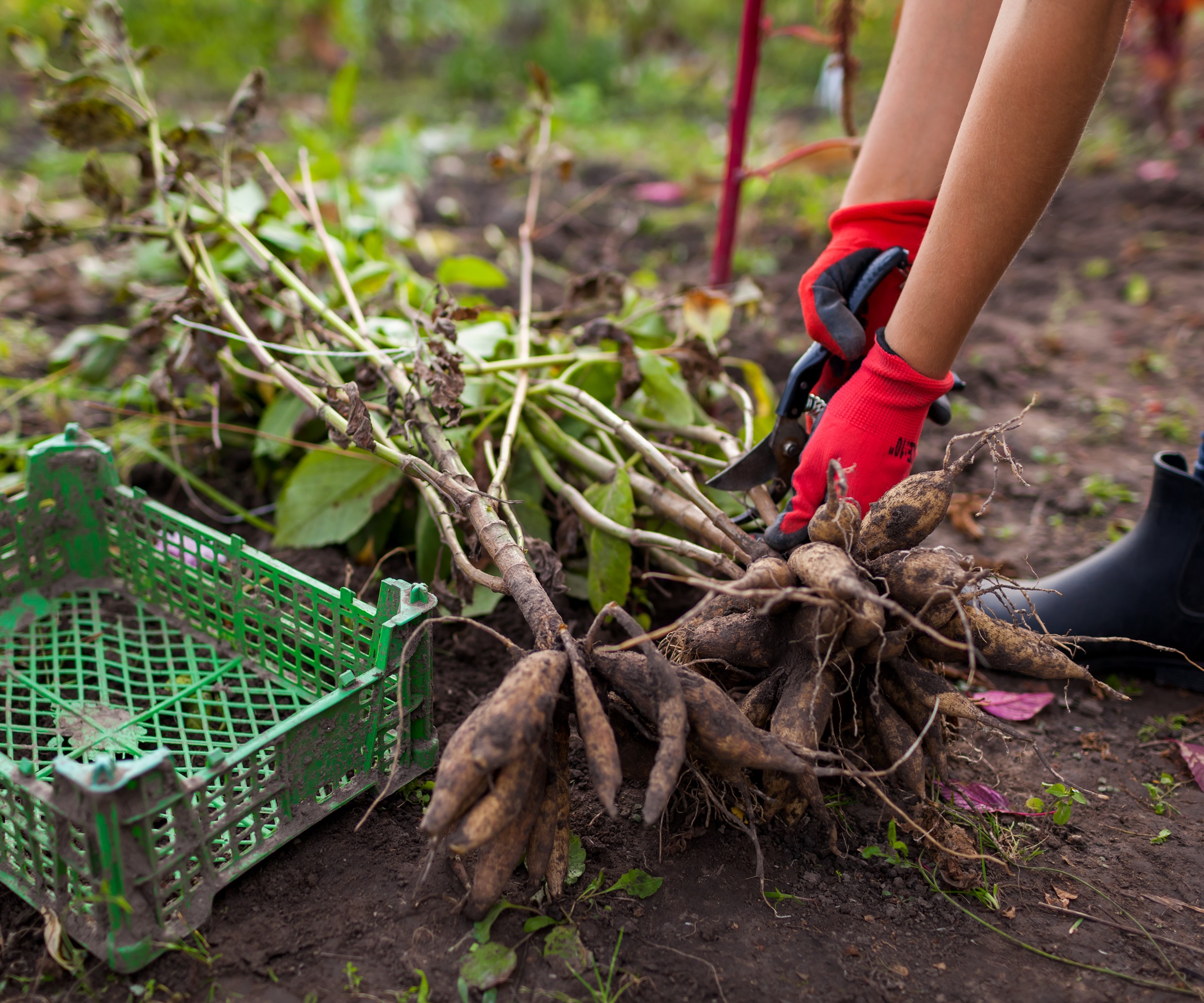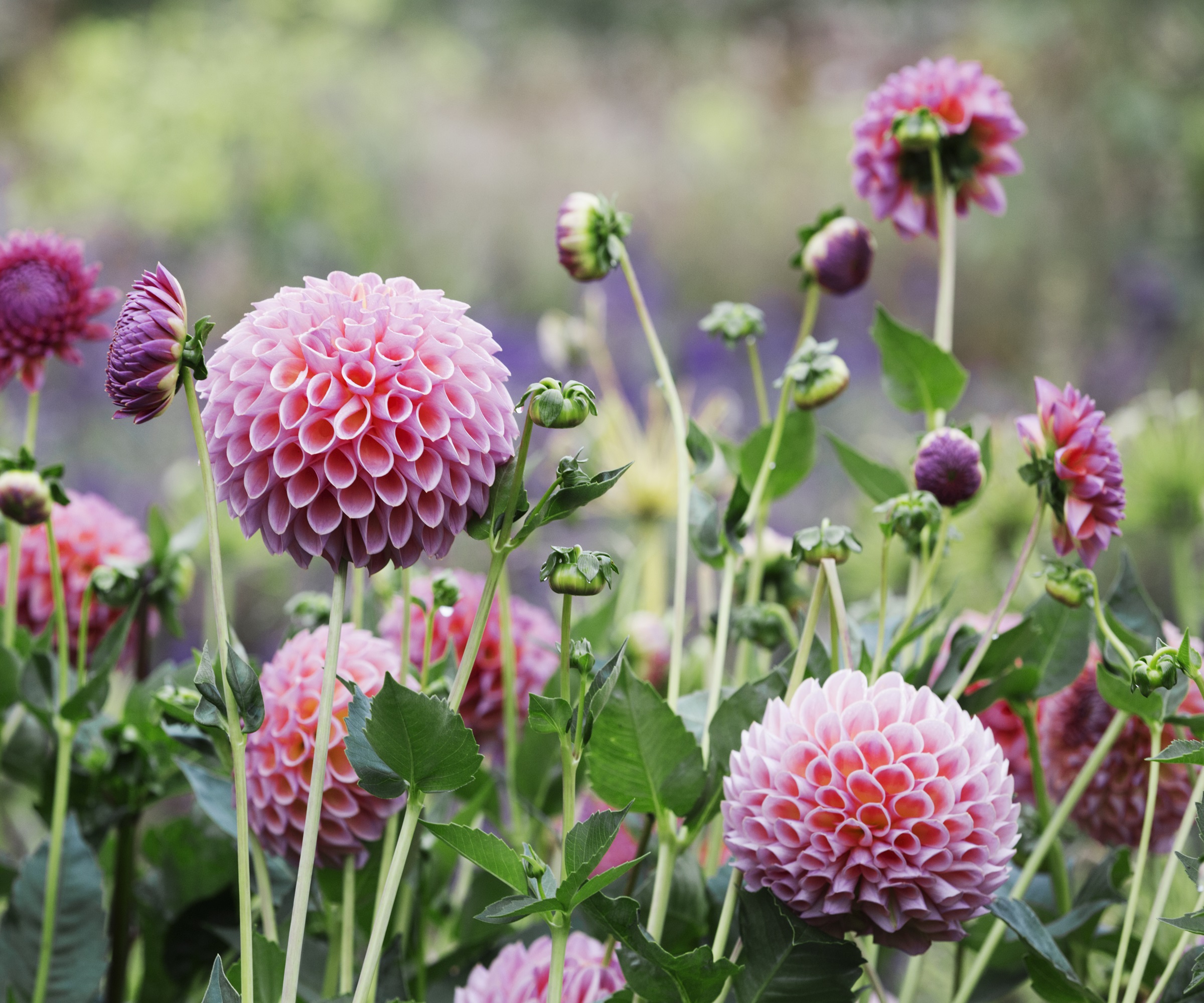
Learning how to overwinter dahlias is important, to guarantee that they return the following year. Dahlias tend to continue to flower right up until the mercury drops and the first frosts arrive, and so at this point, it is time to start the process of protecting your dahlias for winter.
Just like when learning how to grow dahlias, figuring out how to overwinter dahlias can seem quite daunting. Should you dig them up or leave them in the ground? How should you store the tubers? Will they regrow next year? All these questions are very important and the answers depend on both your local area and personal preferences.
There are lots of different methods available for overwintering dahlias, which means there will be a little bit of trial and error as you figure out the best way in your specific part of the world. It might be worth trying several different approaches to see which works best for you and your winter garden ideas.

How to overwinter dahlias: a step-by-step guide
Planning a winter garden does involve preparing more tender plants for dormancy during cold weather. The key thing to remember when learning how to overwinter dahlias is that the tubers should not be left to totally dry out, as you would with bulbs.
'Dahlias require a cool climate, ample air circulation, and being placed in a dark area if they are not being stored in soil media,' says Tammy Sons, owner of Tennessee Online Plant Nursery.

- The first frost marks the start of the overwintering period for dahlias. Wait until a frost has turned the foliage black, then cut the plant down to about 6 inches. Then lift the tubers and use your hands to get rid of the soil.
- Having lifted your tubers, the next step is to remove any rotten or dead matter. 'The tuberous roots should feel firm to the touch and not squishy when pressed,' says H&G gardens content editor Thom Rutter. 'If they don't feel firm or if they look rotten, then remove the rotten material with a clean knife until only healthy tuber remains.' Dispose of any unhealthy material on your compost heap.
- Some of the tuberous roots may have become detached from the main body – this is okay. The loose tubers can either be disposed of or you can store them with the rest of the dahlia to see if they might make a viable plant the following summer.
- Dead tubers appear withered and wrinkled. These also need removing and can go on the compost heap.
- Do not clean the tubers under a tap. Instead, turn the tubers upside down in a crate and leave to dry for a couple of weeks.
- Next, label your tubers, recommends Megan Foster, category manager of bulbs & perennials at American Meadows. 'As you build your collection of varieties, you will want to remember which is which come planting time in the spring. Use a marker or tie on a label with old twist ties.'
- Once the tubers have dried out sufficiently, it is time to store them for the winter. There are several methods for storing dahlias. The best method for how to overwinter dahlias primarily depends on where you a storing them. If you are storing them in a slightly moist environment opt for paper bags, such as these from Amazon, or cardboard boxes as these will absorb the moisture from the air. If you are storing them in somewhere that is drier, then a plastic box or bin bag is a better option as these can be occasionally spritzed with water.
- Unlike bulbs they also need to be insulated to keep them warm and prevent them from drying out. You can either cover them in loose, dry compost, sand, vermiculite, such as this from Amazon, or straw, or you can wrap each tuber in newspaper.
- Place your tubers in a dry and cool place – unheated greenhouses, sheds, porches or the cellar are all great options.
- 'Check on your tubers throughout winter looking for signs of rot or severe dehydration,' says Thom. 'If you spot signs of rot, cut away the compromised material until you are back to the healthy tuberous material. It is also worth moving your dahlias to a drier location to prevent further rot from taking hold.'
- Dehydrated tubers are the other challenge when learning how to overwinter dahlias. It is quite easy to tell if your dahlias are dehydrated as they will look shrivelled. If this is the case, occasionally spritz the dahlias with water to help them absorb more moisture.
When to leave dahlias in the ground

If you live in an area that experiences milder winters and you have very free-draining soil then you can leave your dahlia tubers in the ground. However, this is only suggested for hardiness zones 7 to 10.
If you are leaving your tubers in the ground, then there are some steps you must follow to protect them during the cooler months.
Once your dahlia plant has succumbed to the frost, leave it for about two weeks to let the sugars go back into the tuber, then cut the stem back to around 6 inches tall. Dispose of the foliage on your compost heap. After this, cover with a mound of deep mulch, such as this pine bark mulch from Amazon, to insulate the tubers throughout the winter months.
Overwintering dahlias using Saran Wrap

Overwintering dahlias in Saran Wrap, available from Walmart, is a fairly new method, however, it has received a great response. In fact, it is now the go-to method for the American Dahlia Society, having moved away from vermiculite and plastic bags.
Start by lifting your dahlias, as you would for any other method, and clear them of soil. Whether you treat your dahlias with an anti-fungal treatment to ward off rot is a personal choice, and should you not wish to, you can simply skip this step. However, it will offer greater protection for your dahlias over the colder months.
'Add a very small amount (around a tablespoon) of powdered sulfur to 3 cups of dry vermiculite in a gallon size Zip Lock bag and mix thoroughly,' suggests the experts at The American Dahlias Society. Then add your tuber and shake lightly so that your dahlia tuber is coated - 'a very, very light coating should be best.'
Having done this, set your dahlias aside in a crate to dry overnight before wrapping. 'Tear off a sheet of plastic wrap about 20 inches long and lay it flat on a level surface. Place a tuber on one end and roll the plastic wrap over one complete turn. Lay another along side and roll again. Be certain that no tuber is touching another; plastic wrap must separate all tubers.' Once you've wrapped your dahlias, fasten with masking tape and label with the dahlias's name before storing in a dark and dry place at around 40°F for winter.
Made of hard-wearing leather, these gardening gloves are useful when lifting your dahlia tubers to keep your hands warm and dry.
Use sharp and efficient pruners when tidying up your dahlia tubers, such as these beautiful Okatsune pruners.
These recyclable paper sacks are another viable option for storing dahlia tubers, just be sure to write the variety of the outside.
FAQs
Should I split my dahlia tubers before overwintering?
Whether you split your dahlia all comes down to a matter of confidence and knowledge about how to overwinter dahlias. 'If you’re not sure where the eyes are, don’t break apart your tuber clump in the fall before storage. The tuberous fingers of the dahlia are winter sugar and moisture survival supplies for the eyes which are the source of new growth for next spring. If you disconnect the two accidentally, you’ll be disappointed with lack of growth,' advises Megan Foster, category manager bulbs & perennials at American Meadows.
However, if you are certain where the eyes are and that they are still connected to plenty of tuberous fingers, then you can separate the two before overwintering. To do this use a clean knife to cut away the eye and tuber. Then overwinter in the same way you would a non-separated dahlia.
Can you leave dahlias in pots over winter?
Although dahlias aren't candidates for the best winter plants for pots and borders, yes, you can leave dahlias in pots over winter. But, it is vital that they are sufficiently protected from the cold weather, either by bringing the pots indoors or by adding a layer of mulch and wrapping them in fleece.
When should I cut back dahlias?
Cut back dahlias in late fall – October and November is ideal. Leave the stems to go black from the first frost for approximately a two weeks to allow the sugars to go back down the stems to feed the tuber. Then cut the stems off just below ground level.
You should to do this whichever way you are overwintering your dahlia tubers, as it will increase their likelihood of survival, and the extra energy it provides will help them to restart growing in the following spring.
There can be a lot of facets to overwintering a garden, but if you prioritize tender bulbs and perennials, and take a few simple steps to protect plants from frost, your yard should be back to its full potential come the spring.







